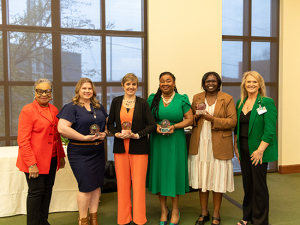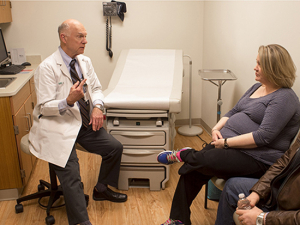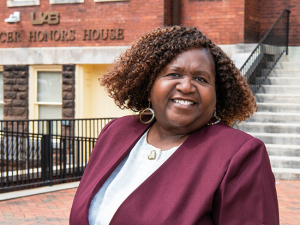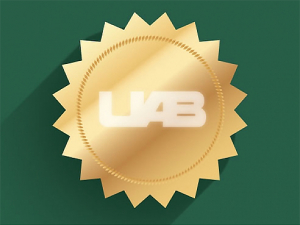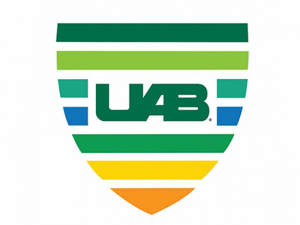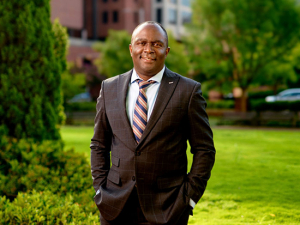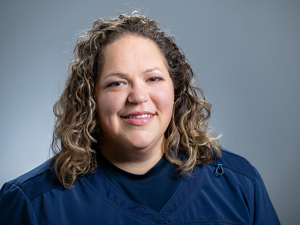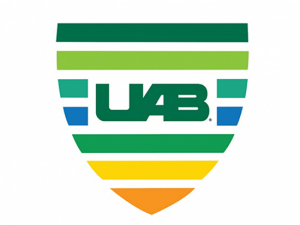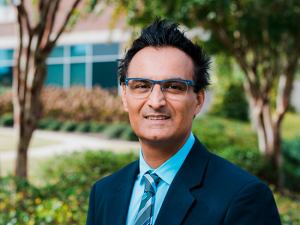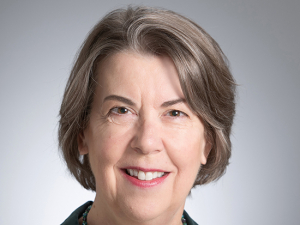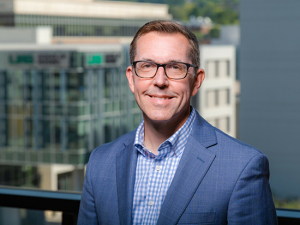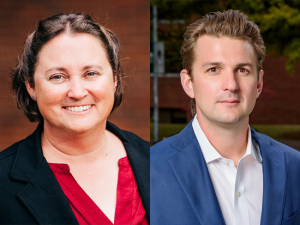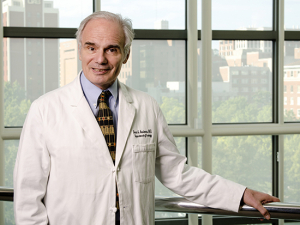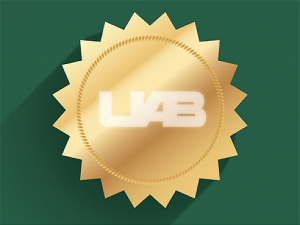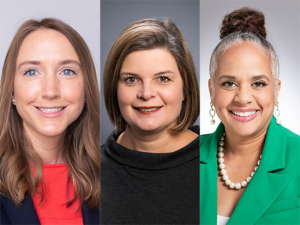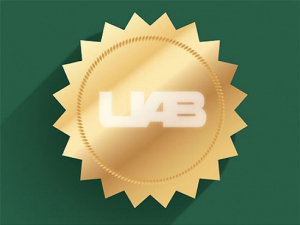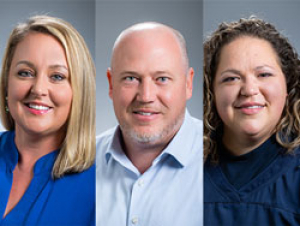UAB’s designation by the Carnegie Foundation as an institution with “very high research activity” has accustomed faculty, staff and students to hearing its world-renowned teacher-scholars have received competitive grants and other awards to support their research.
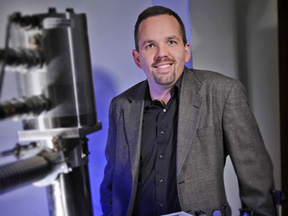 Even so, it is still impressive that some of our youngest and brightest scientists have been thrust into the spotlight in the past seven months, with three professors winning National Science Foundation Career Awards — a prize that the foundation describes among its most prestigious.
Even so, it is still impressive that some of our youngest and brightest scientists have been thrust into the spotlight in the past seven months, with three professors winning National Science Foundation Career Awards — a prize that the foundation describes among its most prestigious.
David Hilton, Ph.D., assistant professor in physics, Xincheng Yao, Ph.D., assistant professor in the biomedical engineering and Ho-Wook Jun, Ph.D., assistant professor of biomedical engineering, each won the influential award to support the early career-development activities of professors who most effectively integrate research and education within the context of the mission of their organization.
This month UAB Reporter looks at Hilton’s work and its promise. Jun was featured in the March 7 edition.
Hilton received his $600,000 NSF Career Award for research into coherent manipulation in quantum systems. He wants to develop novel applications to facilitate computation on the quantum scale.
Q. What was your reaction to this honor by the NSF?
A. The first email from NSF about this award came Nov. 1, 2010, so I was a bit unprepared for it. I was expecting to hear something, either way, by mid-December, so it was about six weeks ahead of me. I actually waited a day to tell anyone here at UAB, mostly to make sure someone at NSF headquarters hadn’t pushed a button by mistake.
Q. How did you become interested in this type of research?
A. I became interested in optics in my senior year of high school. The University of Rochester, where I was an undergraduate, has an extensive program in Optics and Optical Engineering. The program is one of only a few in the United States that trains optical engineers on the physics of light, building imaging systems and lasers and designing photonics. Basically, we treat photons the same way that electrical engineers treat electrons.
I work with lasers and study how light interacts with electronic materials. Laser spectroscopy is an extremely powerful tool to help to understand why materials are insulators, semiconductors, metals or superconductors, which is the basis of my research here.
Q. What is the significance of the nanoscale?
A. Typically, when electronic device sizes approach nanometers (1 billion nanometers is a meter) the basic rules of motion change — radically. You can walk into your local electronics store today and buy computer processors that are built with these dimensions. Intel just released new computer chips with minimum feature sizes of 32 nm. Intel and their competitors are continuing to shrink these processors, so they need to develop entirely new ways to handle these radically different rules.
To illustrate: Suppose you are watching a football game and the quarterback throws to a receiver (who, naturally, catches it with ease). The ball follows a specific path (an arc path from the quarterback to the receiver) and has a specific speed. In contrast, when you talk electrons the nanometer scale, you cannot say electrons have a specific path or a specific speed. We call these different rules of motion quantum mechanics. When an electron moves in a transistor (the basic element of any computer chip), that electron behaves more like a water or light wave. The electron now has a wavelength and can interfere with itself and other electrons in ways that we might not have wanted.
This difference changes how you would design electronics. You could see quantum mechanics as an obstacle to overcome, but our research program takes a different view — we want to make lemonade out of what might seem like lemons. We focus on the new things we can do with these wave-like effects that haven’t been possible in previous generations of electronics. As an example, the late Professor Richard Feynman from Caltech proposed an entirely new version of a quantum computer that would be built on the principles of quantum mechanics. His design would be capable of performing calculations at an astonishing rate that the current transistor-based design probably never will be able to achieve. Feynman’s proposal was made in 1982, and we are just now starting to catch up with his vision.
Q. What is coherence, and what is its role in design in the future of electronic components?
A. Quantum coherence permits wave-like electrons to interfere and turns on these novel effects due to quantum mechanics. Wave-like electrons are absolutely critical for the Feynman quantum computer design. Coherence is how we mathematically describe this interference and if we cannot maintain the interference, of these electrons, then we cannot construct this new kind of computer. Our work at UAB will focus on the properties of these materials that would destroy coherence and what we can do to improve electronic materials to enable these kinds of new applications.
Q. What is the value in reducing the size of electronic components to the quantum scale?
A. Conventional computers today use transistors as binary switches to represent numbers as a string of 1s (transistor is on) and 0s (transistor is off). The speed at which you can turn on a transistor on and off is one of the limits of the speed that your processor can perform calculations. The main method that people have used since the 1970s to increase computer processor speed from a few megahertz (in 1970s) to gigahertz (now) is to shrink these devices to smaller sizes.
From now on, we are going to have to do more than shrink our electronic components to make them faster, since there is not a whole lot of room left to shrink dimensions below 32 nm (about 60 atoms). This is where our ideas to use quantum coherence in new electronics have attracted interest from National Science Foundation. What new things can we do with the laws of quantum mechanics that haven’t been possible before?
Q. What effect will the research have in the field of physics?
A. The old quote by Yogi Berra is appropriate: “It’s tough to make predictions, especially about the future.” We are focused on the basic physics of these systems, but we know so little about quantum coherence that we have work to do just to figure out how we might go about putting together a Feynman-style computer.
Q. How many more NSF Career Awards can we expect in your future?
A. Half a dozen during the upcoming year alone — they only let you win one time, but I am sure I can figure it out.
To be serious, however, Tony Skjellum, Ph.D., chair of computer science and a former Career awardee when he was at Mississippi State, has been running sessions to help new faculty prepare the specific application. This proposal has research, teaching and outreach components that are very different from other early career awards from the National Institutes of Health, the Department of Defense and the Department of Education.
His is a very strong program that was a significant resource. I have had enormous support from the physics department and the College of Arts and Sciences to obtain this award, so I feel an obligation to help others so that UAB can build on the success that Jun, Xincheng and I have had.
